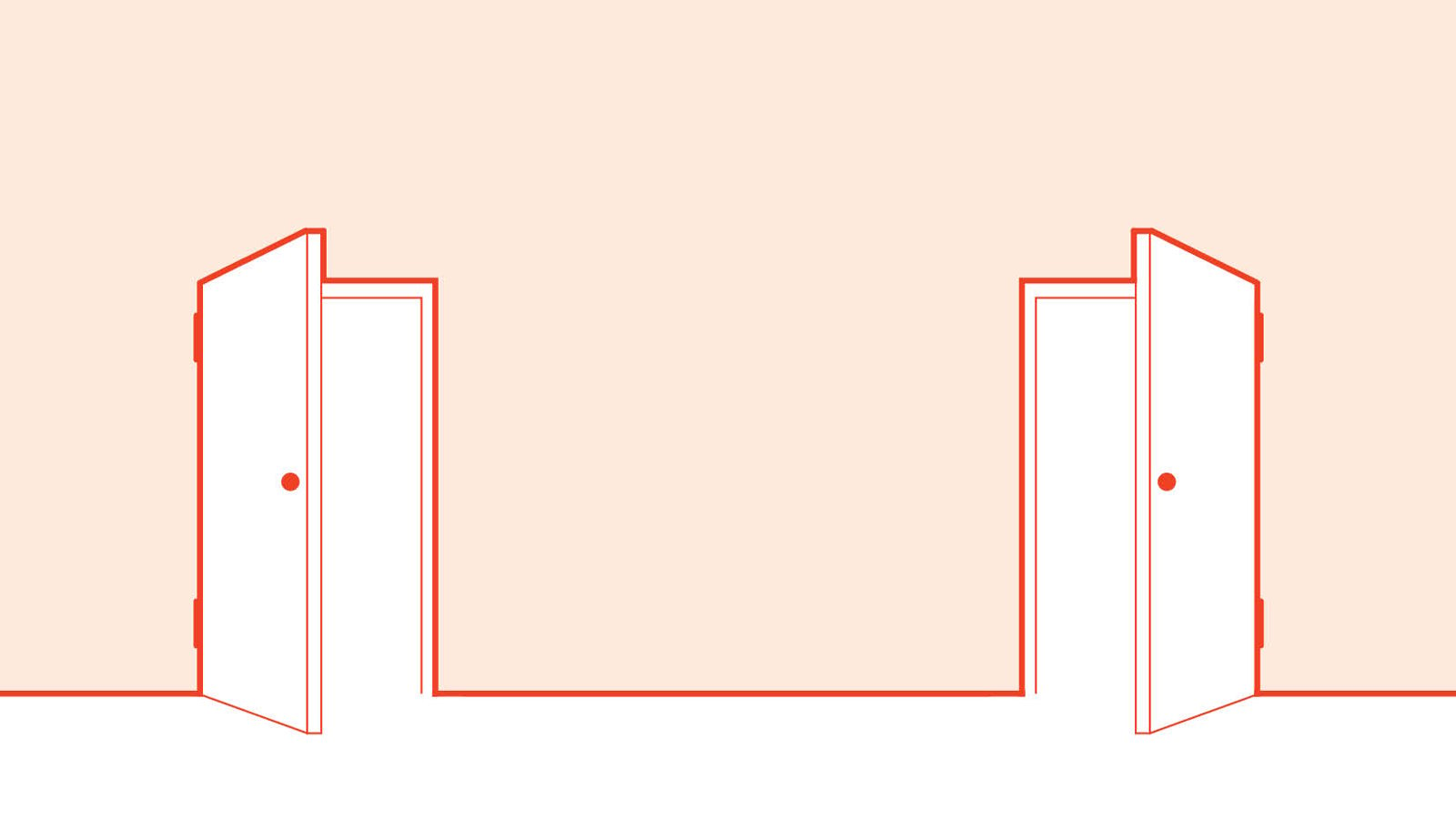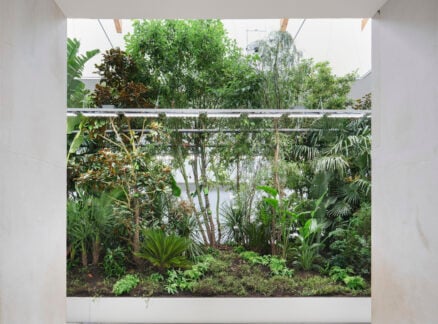
December 21, 2018
Year in Review 2018: Architecture’s Gender Reckoning
Mimi Zeiger writes how the hard work of #MeToo is decidedly less swift and less spectacular than any celebrity takedown.

Last March, #MeToo finally came to architecture. While the specifics of the allegations of sexual misconduct against Richard Meier, white-haired lion of the New York scene, were indeed shocking, many in the discipline were wondering what took so long.
In the months between the accusations that brought down Harvey Weinstein and others in Hollywood, comedy, and media, women in architecture asked one another, “Who will be ours?” Via back-channel messages we speculated about prominent and charismatic figures with reputations for bad behavior. Which architectural heavyweight would be first to fall?
Architecture has often lagged behind critical cultural shifts: It’s a discipline surprisingly leaden in spite of generally progressive intentions. But #MeToo stripped bare any feel-good assumption that the profession had evolved beyond the Howard Roark model of the heroic architect. For decades, the percentages of others—other genders, other races, other classes, other abilities, other sexual orientations, other-than-cis-white-male—in the field have remained low. Those figures, in any case, are often used to preach to the choir that diversity is a critical issue.
Even so, in the months after the Weinstein allegations, we simmered, waiting for revelations of our own to surface. It’s possible to attribute such a slow burn to architecture’s circumscribed power and internalized focus. Many who hold sway over practice or the academy barely register in mainstream media. As Rebecca Traister ruefully wrote in New York magazine’s The Cut last November, responding to an in-box full of emails from women wanting to take a story of abuse or harassment public, “To many of them I must say that their guy isn’t well known enough, that the stories are now so plentiful that offenders must meet a certain bar of notoriety, or power, or villainy, before they’re considered newsworthy.”
In the end, it was Meier, but it could have been any number of male architects with enough relative fame and power to qualify for a New York Times unmasking. Though it’s worth noting that the paper had profiled Meier at his summerhouse just eight months earlier.
In truth, the hard work of #MeToo (and the intersectional quest for equity) is decidedly less swift and less spectacular than any celebrity takedown. It is slow and exhausting, with the onus on the survivor to not only present her case but also struggle against systems, institutions, and bureaucracies designed to maintain the status quo. For example, in March 2016 doctoral candidate Eva Hagberg Fisher filed a Title IX complaint of sexual harassment against Nezar AlSayyad, a professor at UC Berkeley’s College of Environmental Design. This past August the university finally confirmed a pattern of sexual harassment and suspended him for three years without pay. AlSayyad chose to retire. His emeritus title and privileges will be withheld for three years. (In stepping down from the helm of his firm in October, Meier also took a retirement dodge.)
Almost every woman I know has a story of harassment, unwanted sexual behavior, abuse of power, or discrimination by men. The Shitty Architecture Men list, the viral Google spreadsheet that appeared in the wake of the Meier story, was filled with a broad spectrum of allegations of creepy to abusive behavior—some reported, some voiced for the first time. “The List,” as we whispered to one another, was both cathartic and unsettling. Finally, there was recognition of the unspoken misogyny dished out in design studios and workplaces.
Still, for those in the discipline, the List stirred up complicated feelings—anger, shame, disbelief—as the column of names grew to include not only icons but also colleagues and friends. Hitting so close, it revealed, as in horror movies, that the monster IS IN THE HOUSE. Overwhelmingly white and male, our field is not a neutral hegemonic condition for women, LGBTQIA, and people of color to carefully navigate; it’s an active threat.
The Shitty Architecture Men list was an imperfect tool for fighting back; it included uncorroborated accusations and was vulnerable to misuse. However, it embodied architecture’s sequela, to crib a psychological term for the aftereffects of trauma from Dr. Christine Blasey Ford’s testimony before the Senate.
Much has been written about the need to fix our collective trauma—the systemic conditions within schools and offices that allowed for toxic behavior: institute stronger sexual misconduct policies and equitable hiring practices; include more women on juries and reevaluate the inherent power structure of the jury system itself; and abolish the cult of personality swirling around top designers and academics, to name a few.
Earlier this year, Beverly Willis and Julia Donoho called on the AIA to update its Code of Ethics and Professional Conduct to specifically define and prohibit sexual misconduct: assault, harassment, and retaliation. They asked that the AIA urge the National Council of Architectural Registration Boards to take action.
But the culture of architecture begins in the academy; from there it extends into the greater field, into the hierarchies of offices, design publications, or museums. #MeToo and the List may not have toppled careers, as we saw in Hollywood, but it did rattle foundations. Among the whispers and text messages swirling about, there was gossip that several individuals accused had quietly engaged legal counsel. Names on the List implicated some institutions more strongly than others. I reached out to several university deans for comment on how their institutions have addressed the fallout and what actions they are taking.
When architect Deborah Berke took over as dean of the Yale School of Architecture from Robert A.M. Stern, she filled a position whose previous occupant often seemed tone-deaf to the challenges facing women practitioners. About a decade ago, Stern took flak for suggesting that motherhood was the culprit for gender imbalance in the profession—an old-fashioned position used to justify inequality for years. In the time since Berke assumed the deanship, she’s worked to ensure equity in the lecture series, juries, and new faculty hires, and bolstered orientation for incoming students. In an email response to my questions about the impact of the List at Yale, she explained that the school had held meetings open to students wanting to discuss its issues. “The conversations weren’t easy but were definitely necessary and productive,” she wrote.
Yale isn’t the only school responding to issues of discrimination and sexual misconduct. In April, students at the Harvard GSD hung large banners in their Gund Hall studios demanding that the university address the List’s allegations of misconduct and provide transparency. Asked about steps the GSD is now taking, outgoing dean Mohsen Mostafavi offered a lengthy comment via email that included a renewed commitment to ensuring equity and several specific #MeToo–related actions by the department and university, such as requiring all faculty, staff, and students to complete an online learning module titled “Supporting a Harassment-Free Community.”
“The current organization of practice creates challenging conditions for women, and there are many factors that contribute to that complicated working environment, including the nature of the architect-client relationship, the value society ascribes to design, and working habits that are often formed in schools,” wrote Mostafavi, adding a reference to his belief that the GSD could be a leader in transforming practice.
The GSD is also filling a newly created role: assistant dean of diversity, inclusion, and belonging. Administrative and policy changes underscore how seriously the university takes issues of sexual misconduct and harassment. Similarly, the University of Michigan instituted mandatory training for faculty and staff and is hiring a diversity, equity, and inclusion specialist. For Jonathan Massey, professor and dean of Michigan’s Taubman College of Architecture and Urban Planning, these actions are part of the ongoing mission to build a more equitable architecture education— one welcoming of greater economic, racial, and gender diversity.
“Based on one year’s experience here, and from what I have seen in the Shitty Architecture Men list and other forums, Taubman College seems to be a better environment than most with respect to sexual harassment and misconduct, due in part perhaps to strong female leadership at multiple tiers over the past decade,” wrote Massey in an email. “But we need to continually solicit reporting and earn trust.”
That trust is crucial.
It’s exciting to see this year’s student-led activism crystallize into events such as Convergence, a conference “at the confluence of power, identity, and design” that took place at the GSD in early November, or publications like Forward Slash: A Feminist Design Edit, an online platform for sharing feminist texts begun by Taubman graduate architecture students Ibiayi Briggs and Lorraine Gemino, with guidance from their professor Ellie Abrons. Collectivity and self-education are crucial components of emergent feminist practices.
But while I wholeheartedly support these kinds of projects, I worry that they may fall into a familiar pattern of impressive activism followed by limited structural change.
Feminist solidarity, while critically important, runs parallel to #MeToo reform. It cannot and should not replace the overarching need for the kind of transformation necessary for equity in the field and an educational experience liberated from abuse and harassment. Architects are trained to be both ambitious and visionary—to build the future we want to see. Yet the burden of change cannot lie only with groups at risk of discrimination or survivors of misconduct. Those with power and our male allies have a responsibility to share the weight of reform and recovery.
In her remarks to the Senate, Ford described needing to have two front doors on her house to feel safe, an architecturally potent example of the need for a way out. Our field is victim to its own internalization, which reinforces abuses as well as institutional gatekeepers, glass ceilings, and decorum. We whisper when we should be shouting.
We need a second front door.
A Los Angeles–based critic and curator, Mimi Zeiger organized her first exhibition about women in architecture in 1996 while a student at SCI-Arc. She co-curated Dimensions of Citizenship, the U.S. pavilion at the 2018 Venice Architecture Biennale, which explores tough questions of inclusion and exclusion.
You may also enjoy “Five Takeaways from the AIA’s Guide for Equitable Practice.”
Recent Viewpoints
Viewpoints
Sustainability News Updates for Q2 2025





